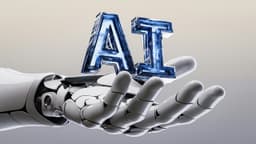Why Are Machine Learning and AI Better at Processing Unstructured Data?
Why are machine learning and AI considered superior when it comes to processing unstructured data? The answer lies in their remarkable ability to adapt, learn, and process vast amounts of information that traditional systems struggle to handle. Machine learning, a branch of artificial intelligence, has fundamentally transformed the way we analyze data, particularly unstructured data, which is difficult to manage using conventional methods.
The Complexity of Unstructured Data
Unstructured data refers to information that doesn’t fit into predefined formats like rows and columns in a database. This type of data includes a wide array of content, such as emails, social media posts, images, videos, and even audio files. It is a challenge for traditional computers to make sense of such diverse inputs because they are designed to work best with structured data — data that is neatly organized and labeled.
The problem with unstructured data is that it often contains complex relationships between different variables, making it difficult to analyze using standard computational techniques. Traditional systems need significant manual intervention to process unstructured data, which is time-consuming and error-prone. This is where machine learning and AI step in, offering a more intelligent and efficient solution.
Why Machine Learning Outperforms Traditional Methods
What makes machine learning and AI excel in handling unstructured data? Let’s take a closer look at the factors that set them apart:
1. Self-Learning Capabilities
Machine learning models can improve over time as they process more data. Traditional systems, in contrast, require human programmers to continuously update algorithms when new data or variables are introduced. This ability to learn from experience is crucial when dealing with unstructured data, which is constantly changing in form and content. As the data evolves, machine learning models can adjust and provide accurate insights without needing constant updates.
2. Recognizing Complex Patterns
Machine learning algorithms, especially those utilizing advanced techniques like neural networks, are highly effective at detecting intricate patterns within data. Unstructured data often hides valuable insights within layers of complexity that traditional algorithms would struggle to identify. For instance, image recognition tasks that involve identifying objects in a picture or understanding the sentiment in a tweet are tasks where machine learning excels. The ability to detect patterns quickly and accurately is what gives machine learning a distinct advantage.
3. Human Language Processing
A significant portion of unstructured data consists of text, such as documents, emails, or social media comments. Machine learning, through natural language processing (NLP), is capable of interpreting and making sense of this text. NLP allows machines to understand context, identify key terms, and extract meaning from human language. Traditional systems, on the other hand, would require extensive programming and rules to process text-based data, which would still result in a much lower level of understanding.
4. Scaling with Data Growth
As the volume of unstructured data grows, machine learning systems can scale efficiently. Traditional methods often falter when faced with large datasets, requiring significant computational resources and time to process even basic queries. Machine learning, supported by high-performance computing, can process vast amounts of data in parallel, allowing for faster and more efficient analysis.
5. Speed and Efficiency
One of the most significant advantages of machine learning is its ability to perform large-scale computations quickly. Once trained, a machine learning model can process new data rapidly by applying learned patterns. This allows for near-instantaneous results, which is particularly important in fields like healthcare, finance, and e-commerce, where speed is crucial for making decisions based on large and complex datasets.
6. Automatic Feature Identification
Machine learning models have the unique ability to automatically extract important features from raw data, a process called feature learning. Traditional systems rely on humans to identify and select relevant features, which is both time-consuming and prone to bias. With machine learning, this step is automated, making the analysis faster and more accurate.
7. Adapting to Change
Unstructured data is rarely static. Social media trends, evolving customer behaviors, or the dynamic nature of news articles mean that the data is always shifting. Machine learning systems can adapt to these changes without requiring a complete overhaul of the underlying algorithms. Traditional systems, on the other hand, need constant reprogramming to stay relevant.
Real-World Application: Netflix's Recommendation System
To understand the practical implications of machine learning’s superiority, let’s consider Netflix’s recommendation system. Netflix processes vast amounts of unstructured data daily, including viewing history, user preferences, and even the time spent watching certain types of content. Machine learning enables Netflix to analyze this data and predict what a user might want to watch next with remarkable accuracy.
Netflix’s algorithms continuously learn from the millions of user interactions, allowing the platform to provide personalized recommendations. This dynamic learning capability allows Netflix to adapt to individual preferences in real-time, whether it’s identifying popular shows or suggesting niche content based on a viewer's unique behavior. Traditional systems would struggle to keep up with this level of complexity and customization, requiring frequent manual adjustments to reflect shifting user preferences.
Machine learning makes it possible for Netflix to deliver tailored recommendations efficiently, enhancing user satisfaction and engagement. Without machine learning, the sheer scale and complexity of Netflix’s data would make it nearly impossible to offer such a personalized experience.
Machine learning and AI are better at processing unstructured data because they can learn, adapt, and scale in ways that traditional systems simply cannot. Their ability to recognize complex patterns, handle vast amounts of data, and process information quickly makes them indispensable in today’s data-driven world. As unstructured data continues to grow exponentially, machine learning will remain a critical tool for turning this raw data into actionable insights.












